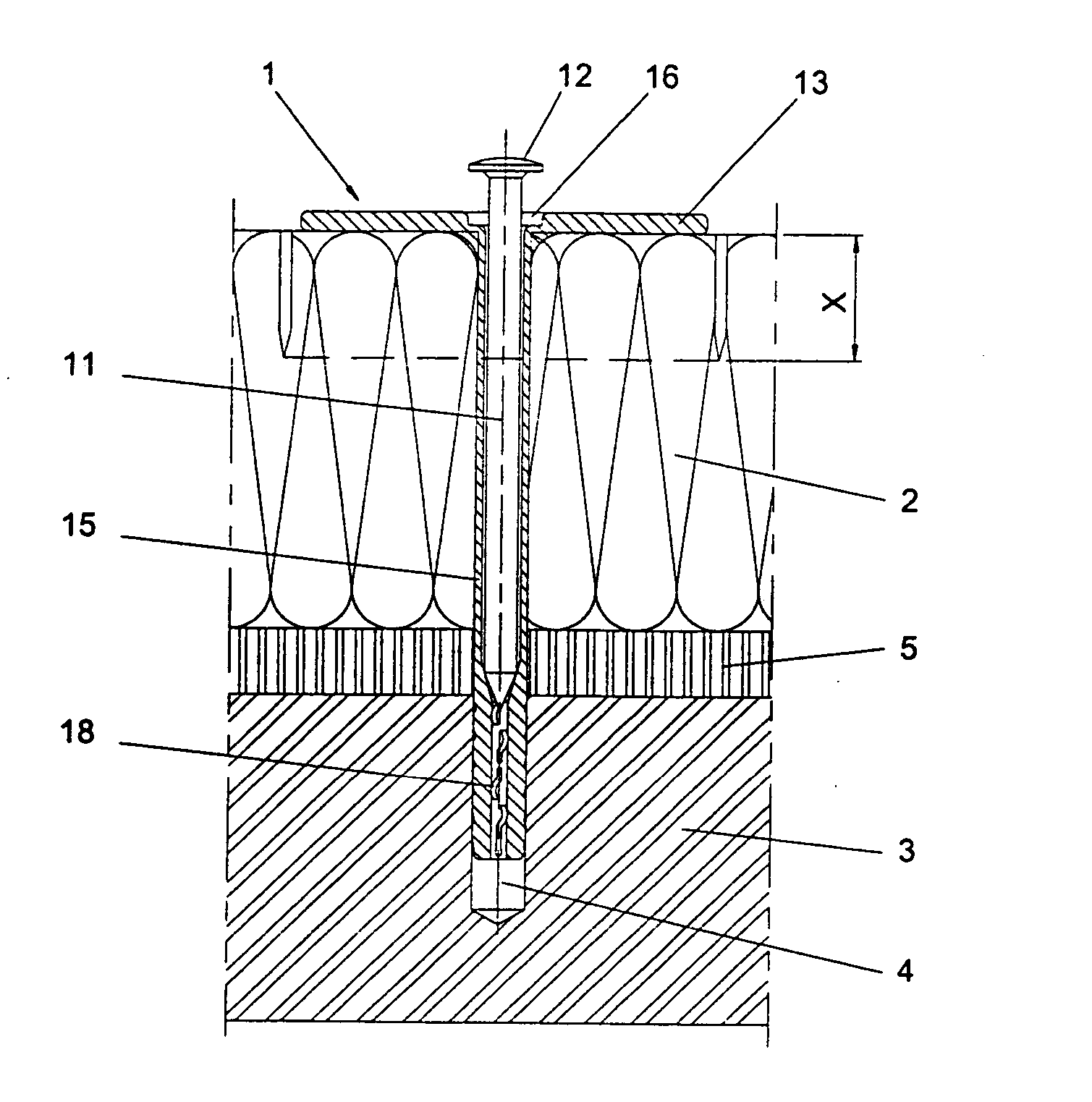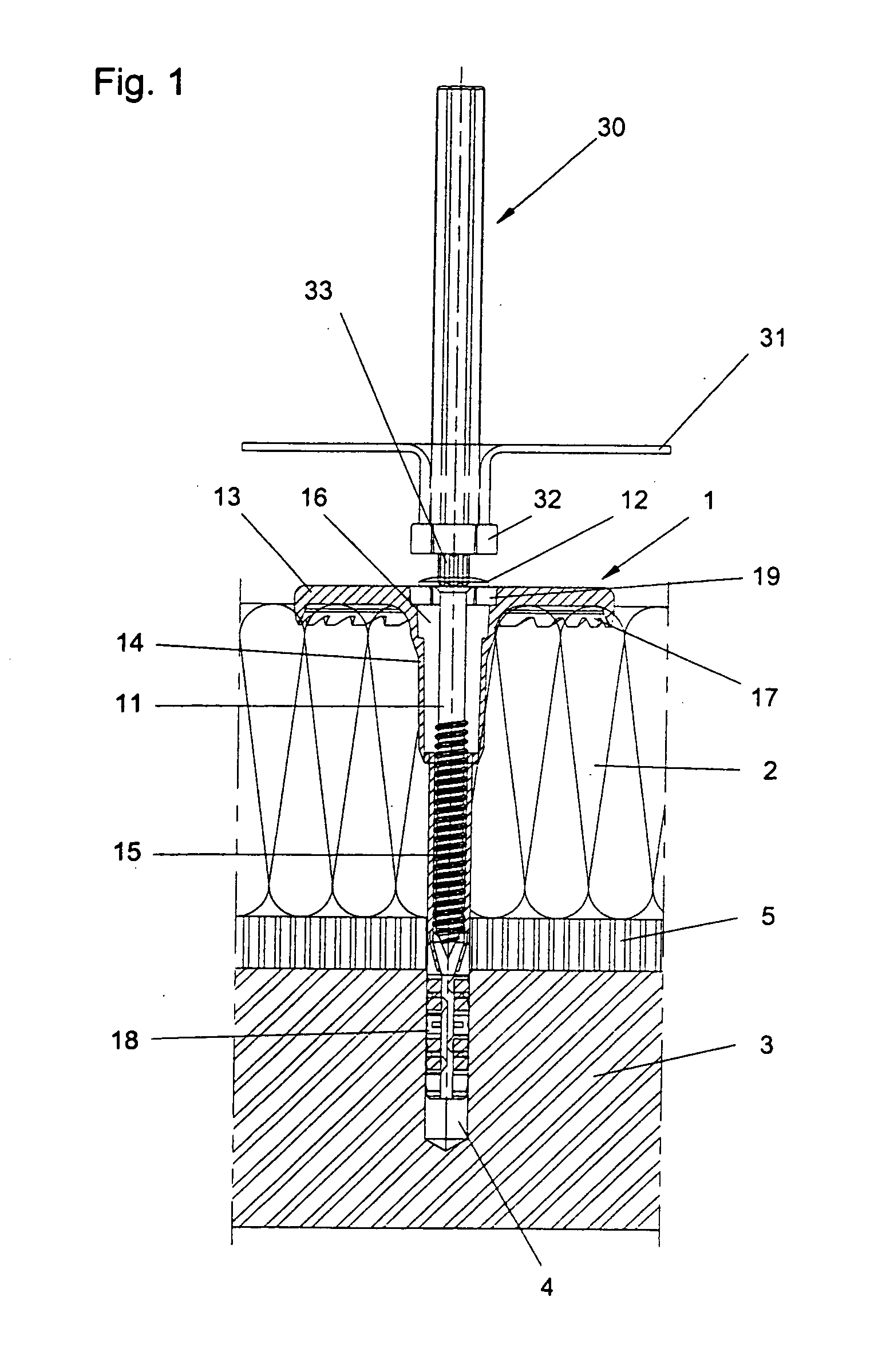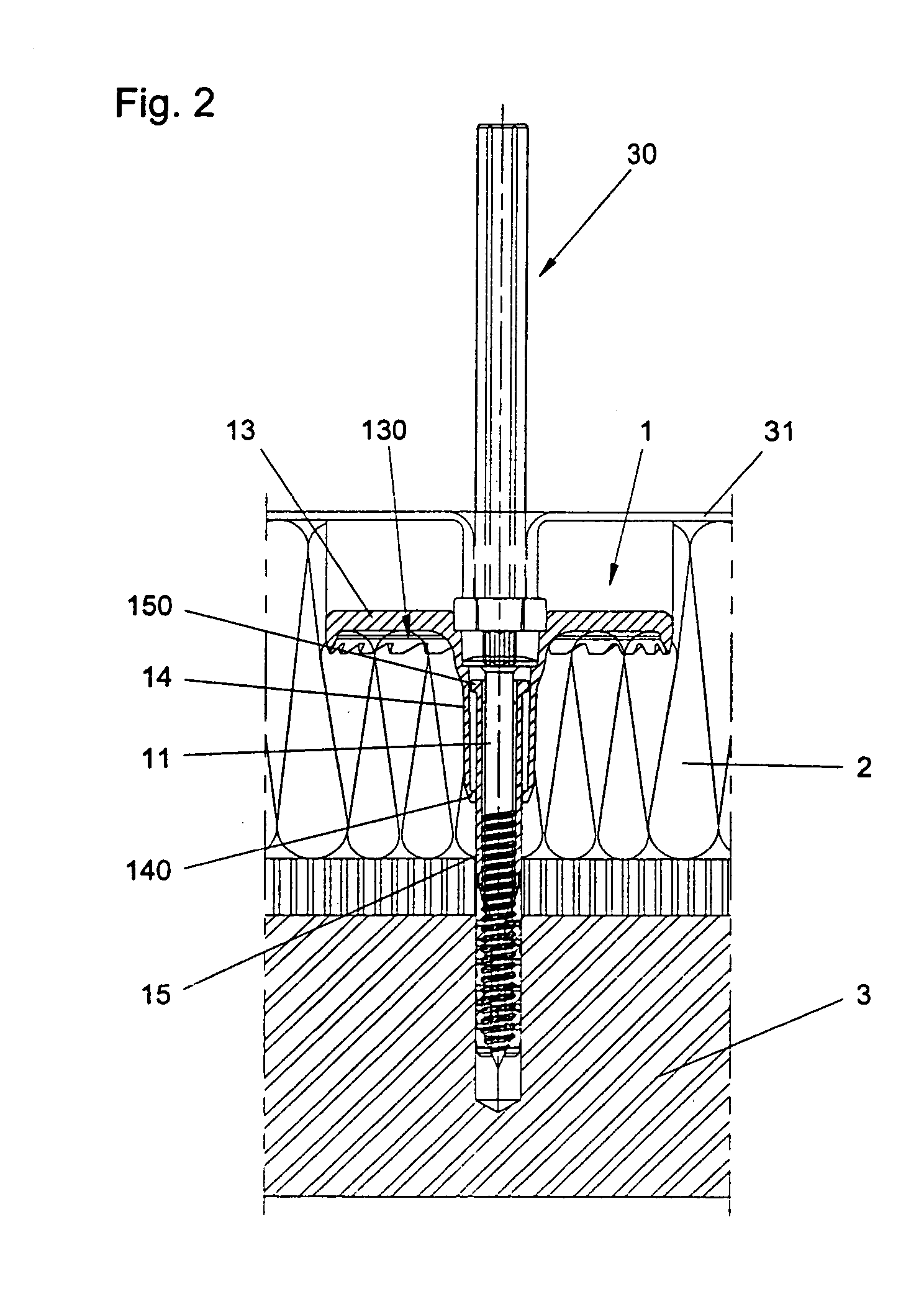Dowels and methods for the assembly of insulating panels
a technology of insulating panels and dowels, which is applied in the field of dowels, can solve the problems of considerable abrasion of insulating materials, undesirable dowel show-through in the plaster layer at the outer walls, and inability to completely prevent the formation of thermal bridges, so as to avoid the pollution of the environment by milling insulating materials
- Summary
- Abstract
- Description
- Claims
- Application Information
AI Technical Summary
Benefits of technology
Problems solved by technology
Method used
Image
Examples
Embodiment Construction
[0033]FIG. 1 shows the dowel 1 which has already been put through an insulating plate 2 and an intermediate layer 5 into the brickwork 3. The pressing plate shaft 14 and the dowel sleeve 15 are connected with each other in this state, for inserting the dowel in full length. The pressing plate 13 which is provided at its lower side with radial cutting devices 17, lies on the surface of the insulating plate 2, wherein the cutting devices 17 are stuck in the insulating material. The pressing plate 13 is usually provided with co-axially arranged openings, however, regarding compressing the insulating material as uniformly as possible, also embodiments without openings are conceivable. The expansion element 11, preferably an inside torx screw in this case, has been inserted into the dowel sleeve 15 up to the expansion zone 18 by means of a respective drive 32, 33, so that the expansion element head 12 does not yet bear on the recess 16. The expansion element 11 can be realized without pl...
PUM
| Property | Measurement | Unit |
|---|---|---|
| depth | aaaaa | aaaaa |
| distance | aaaaa | aaaaa |
| circumference | aaaaa | aaaaa |
Abstract
Description
Claims
Application Information
 Login to View More
Login to View More - R&D
- Intellectual Property
- Life Sciences
- Materials
- Tech Scout
- Unparalleled Data Quality
- Higher Quality Content
- 60% Fewer Hallucinations
Browse by: Latest US Patents, China's latest patents, Technical Efficacy Thesaurus, Application Domain, Technology Topic, Popular Technical Reports.
© 2025 PatSnap. All rights reserved.Legal|Privacy policy|Modern Slavery Act Transparency Statement|Sitemap|About US| Contact US: help@patsnap.com



